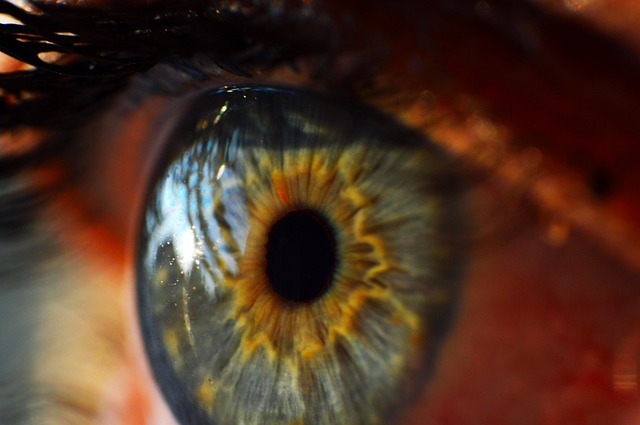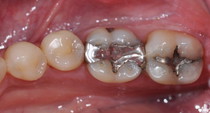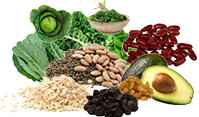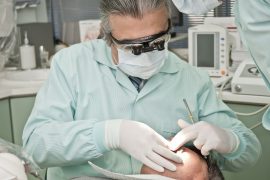Aging is inevitable, but are age-related problems such as poor vision absolute givens? Contrary to popular belief, your vision is largely dependent on your lifestyle. Nourishing your eyes with appropriate nutrients throughout the years can go a long way toward maintaining good eyesight well into your senior years.
Moreover, even if your eyesight has started to deteriorate, evidence suggests you can stop the deterioration. You may even be able to turn back the clock, as it were, and improve your vision.
Foods Can Protect and Improve Your Eyesight
In a recent BBC article,1 Dr. Michael Mosley discusses his own vision problems and his experiences with nutritional intervention, featured in an episode of the BBC program “Trust Me, I’m a Doctor,” aired on September 8, 2016.
The shape and length of your eyeballs, and the thickness of your eye lens affect your ability to see things close-up and at a distance. Your retina, located at the back of your eye, also contains light-sensitive cells that are critical for good vision.
Your macula — the part of your retina responsible for central vision — is protected by a yellow pigment, made up of lutein, zeaxanthin and meso-zeaxanthin. These compounds absorb light and protect your macula from blue light and ultraviolet (UV) light from the sun and other light sources.2
Lutein, zeaxanthin and meso-zeaxanthin are plant compounds with potent antioxidant capacities. Your body cannot make them, so you must get them from your diet. As noted by the BBC:3
“Lutein and zeaxanthin are found commonly in dark green leafy veg such as kale and spinach, and also bell peppers, corn and saffron. Meso-zeaxanthin is generally not found in plants — it is thought to be made in our bodies from lutein (although it is also present in some fish … )
These pigments, once we eat them, appear to be important in our vision and in helping keep the macula healthy.”
Lutein and Zeaxanthin Supplements Can Make a Big Difference
Mosley describes undergoing a number of extensive vision tests designed to evaluate the health of his retina, his ability to see colors, night vision and the level of protection his macula had against UV and blue light.
“The results of my tests were both fascinating and depressing. My detection of yellow and blue colors was extremely poor — something that [Professor John] Barbur said was likely the result of my brush with diabetes many years ago,” Mosley writes.
My night vision and perception of details were also poor compared with younger people — but consistent with my age. The Trust Me team then handed me a 90-day supply of supplement pills that were supposed to help.”
The supplements in question contained lutein and zeaxanthin. Three months later, follow-up tests revealed remarkable improvement. Not only was his night vision and protective macular pigments improved, but his blue and yellow color perception was now within the normal range.
Some studies suggest these nutrients may also slow down or prevent age-related macular degeneration (ARMD), which is the leading cause of blindness among the elderly, followed by cataracts.
How Much Lutein and Zeaxanthin Do You Need?
While there’s no recommended daily intake for lutein and zeaxanthin, studies have found health benefits for lutein at a dose of 10 milligrams (mg) per day, and at 2 mg per day for zeaxanthin. Meanwhile, studies suggest American adults get, on average, only 1 to 2 mg of lutein from their diet each day.4
Research evaluating the effect of lutein, zeaxanthin and meso-zeaxanthin in combination, using a dose of 10 mg of lutein, 10 mg of meso-zeaxanthin and 2 mg of zeaxanthin per day for one year, found it helped improve vision in those who had normal vision at the outset.5,6
“Should we all, then, be taking supplements to protect and even improve our eyesight? Well, the research certainly shows that supplements work,” Mosley writes.
“Even for someone like me, who has a relatively healthy diet with plenty of fruit and vegetables, and whose blood levels of the compounds that weren’t particularly low, the supplements helped. However, some researchers believe that diet can simply be enough, if we eat the right things.”
What Should You Eat to Protect or Improve Your Vision?
Lutein and zeaxanthin are primarily found in green leafy vegetables, with kale and spinach topping the list of lutein-rich foods. You’ll also find these nutrients in orange- and yellow-colored fruits and vegetables.
According to one 1998 study,7 orange pepper had the highest amount of zeaxanthin of the 33 fruits and vegetables tested. According to the authors:
“Most of the dark green leafy vegetables, previously recommended for a higher intake of lutein and zeaxanthin, have 15 [to] 47 percent of lutein, but a very low content (0 to 3 percent) of zeaxanthin.
Our study shows that fruits and vegetables of various colors can be consumed to increase dietary intake of lutein and zeaxanthin.”
Egg yolk is another good source of both lutein and zeaxanthin, along with healthy fat and protein, and while the total amount of carotenoids is lower than many vegetables, they’re in a highly absorbable, nearly ideal form.
According to a study published last year,8 adding a couple of eggs to your salad can also increase the carotenoid absorption from the whole meal as much as nine-fold!
Eggs from free-range, pastured hens have bright orange yolks, which is an indication of their elevated lutein and zeaxanthin content. Dull, pale yellow yolks are a sure sign you’re getting eggs form caged hens fed an unnatural grain diet, and hence will have low amounts of these valuable nutrients.
How Much Lutein Can You Get From Your Foods?
Following is a list of lutein-rich foods. Most of these also contain zeaxanthin, albeit in lesser quantities than lutein. Ideally, you’ll want to consume these foods as close to raw as possible.
Once you heat spinach or egg yolks, for example, the lutein and zeaxanthin become damaged and will not perform as well in preventing degeneration of your macula. Accessory micronutrients in the foods that enhance their action also tend to get easily damaged.
Lutein Content of Foods
| Food | Mg / serving |
|---|---|
| Kale (raw) | Mg / serving: 26.5 / 1 cup |
| Kale (cooked) | Mg / serving: 23.7 / 1 cup |
| Spinach (cooked) | Mg / serving: 20.4 / 1 cup |
| Collards (cooked) | Mg / serving: 14.6 / 1 cup |
| Turnip greens (cooked) | Mg / serving: 12.2 / 1 cup |
| Green peas (cooked) | Mg / serving: 4.1 / 1 cup |
| Spinach (raw) | Mg / serving: 3.7 / 1 cup |
| Corn (cooked) | Mg / serving: 1.5 / 1 cup |
| Broccoli (raw) | Mg / serving: 1.3 / 1 cup |
| Romaine lettuce (raw) | Mg / serving: 1.1 / 1 cup |
| Green beans (cooked) | Mg / serving: 0.9 / 1 cup |
| Broccoli (cooked) | Mg / serving: 0.8 / 1/2 cup |
| Papaya (raw) | Mg / serving: 0.3 / 1 large |
| Egg | Mg / serving: 0.2 / 1 large |
| Orange (raw) | Mg / serving: 0.2 / 1 large |
|
U.S Department of Agriculture, Agricultural Research Service, USDA Nutrient Data Laboratory. 2005. USDA National Nutrient Database for Standard Reference, Release 20 (2007), Nutrient Data Laboratory Home Page |
|
Vitamin C Combats Cataracts
In related news, higher intakes of vitamin C have been shown to prevent cataracts, the second leading cause of vision loss.9 According to the National Eye Institute, more than half of all Americans end up getting cataracts by the time they’re 80.
The study,10 which compared vitamin C intake and the progression of cataracts in more than 320 pairs of female twins over the course of a decade, found that those who ate more vitamin C-rich foods lowered their risk of cataracts by one-third. Interestingly, vitamin C supplements were not associated with a reduction in risk.
Citrus fruits such as oranges, lemons, limes and grapefruits are well-known for being high in vitamin C, but the fruit with the highest concentration of all is actually acerola cherries (also known as Barbados cherries.) They are not as sweet as a regular cherry but about the same size.
Each cherry only has 1 calorie but 80 mg of vitamin C and the associated micronutrients. I have two of these trees in my front yard and for months I am able to gather 50 to 70 cherries a day. It is by far my favorite and healthiest fruit.
Animal-Based Omega-3 Lowers Risk of Blindness in Diabetics
Another recent study11 found that diabetics who routinely ate 500 mg of omega-3-rich fish (two servings per week) reduced their risk of diabetic retinopathy by an impressive 48 percent.12 Diabetic retinopathy is a serious complication or side effect of type 2 diabetes that occurs when blood flow to your retina is reduced. It’s the most common cause of blindness in diabetics.
This significant risk reduction was primarily attributed to lower inflammation levels. Animal-based omega-3 fats also provide structural support to cell membranes that boost eye health and protect retinal function. Earlier research13 has shown that those with the highest intake of animal-based omega-3 fats have a 60 percent lower risk of advanced macular degeneration compared to those who consume the least.
A 2009 study also found that those with the highest consumption of omega-3 fats were 30 percent less likely to progress to the advanced form of the disease over a 12-year period,14 and a second study published in 2009 found that those with diets high in omega-3 fats along with vitamin C, vitamin E, zinc, lutein and zeaxanthin, had a lower risk of macular degeneration.15
Foods rich in animal-based omega-3 are most naturally raised sea food, which means you need to be mindful of mercury contamination levels. Not all fish are high in omega-3 fats, and most fish are severely contaminated to boot, so it’s important to be selective. Marine sources that are high in omega-3 and low in environmental pollutants include:
- Wild Alaskan salmon (which also contains astaxanthin — one of the most potent promoters of eye health; see below)
- Small fatty, cold-water fish such as herring, sardines and anchovies
- Fish roe
- Krill oil
Astaxanthin — The Most Powerful Promoter of Eye Health
Astaxanthin is produced by the microalgae Haematococcus pluvialis when its water supply dries up, forcing it to protect itself from UV radiation. Besides the microalgae that produce it, the only other source are the sea creatures that consume the algae (such as salmon, shellfish and krill).
Astaxanthin is far more powerful an antioxidant than both lutein and zeaxanthin, and many researchers believe it to be the most powerful antioxidant ever discovered for eye health.16,17,18,19 It’s been found to have protective benefits against a number of eye-related problems, including the two leading causes of blindness in seniors: ARMD and cataracts, as well as:
- Cystoid macular edema
- Diabetic retinopathy
- Retinal arterial occlusion and venous occlusion
- Glaucoma
- Inflammatory eye diseases (i.e., retinitis, iritis, keratitis and scleritis)
Research shows it easily crosses into the tissues of your eye and exerts its effects safely and with more potency than any of the other carotenoids, without adverse reactions. Specifically, astaxanthin has been shown to ameliorate or prevent light-induced damage, photoreceptor cell damage, ganglion cell damage and damage to the neurons of the inner retinal layers.
Astaxanthin also helps maintain appropriate eye pressure levels that are already within the normal range, and supports your eyes’ energy levels and visual acuity.
Depending on your individual situation, you may want to take an astaxanthin supplement. I recommend starting with 4 mg per day. Krill oil also contains high quality animal-based omega-3 fat in combination with naturally-occurring astaxanthin, albeit at lower levels than what you’ll get from an astaxanthin supplement.
How Anthocyanins in Berries Benefit Your Eyes
Dark blue or purplish, almost black-colored berries like black currants and bilberries contain high amounts of the antioxidant anthocyanins. Black currants contain some of the highest levels. They’re also rich in essential fatty acids, lending added support to its anti-inflammatory properties. For medicinal purposes, many opt for using black currant seed oil, but eating the whole food is always an option, especially when they’re in season.
Bilberry,20,21 a close relative of the blueberry, also contain high amounts of anthocyanins, just like the black currant. Research suggests the bilberry may be particularly useful for inhibiting or reversing macular degeneration. A 2005 study22 found that rats with early senile cataract and macular degeneration who received 20 mg of bilberry extract per kilo of body weight suffered no impairment of their lens and retina, while 70 percent of the control group suffered degeneration over the three-month-long study.
According to the authors: “The results suggest that… long-term supplementation with bilberry extract is effective in prevention of macular degeneration and cataract.”As for dosage, Total Health Magazine23 has noted that “positive results in trials required the ingestion of 50 mg or more per day of anthocyanins. A prudent level of intake would be on the order of 90 or 100 mg of the anthocyanins per day.” Similar dosage suggestions are given by the editors of PureHealthMD,24 who note that:
“When looking for a bilberry supplement for the eye, choose one that also includes 10 to 20 mg lutein and 1 to 2 mg zeaxanthin. Patients should target 80 to 160 mg daily. Those seeking prevention of eye disease, or just protection of the cells, can target 40 to 80 mg daily in combination with other antioxidant vitamins or in fruit combinations, such as blueberry/bilberry/raspberry.”
Even More Important: Avoid Artificial Blue Light
The full extent of the health benefits associated with blue light avoidance are only beginning to be understood. Sunglasses that block blue light have the benefit of making objects appear sharper, but mounting research suggests blocking blue light also serves an important biological purpose by regulating your internal body clock, which controls your sleep patterns and other body functions. Indeed, exposure to artificial light is likely one of the most often-overlooked health risks of living in the 21st century.
One of the simplest and least expensive ways to protect your body’s internal rhythm, and thereby support healthy sleep and a lowered risk of many chronic diseases, is to wear amber-colored glasses that block blue light — not just at night but anytime you are exposed to fluorescent or LED lights.
This is because LEDs and fluorescents, although far more energy efficient, are not analog thermal light sources but digital ones. They have unbalanced wavelengths that are very different from the sun. They have a predominance of blue frequencies that contributes to free radical production, and lack the red, infrared and near infrared healing frequencies that stimulate repair and regeneration that are present in thermal light sources like clear incandescent bulbs.
The now-banned-in-the-U.S. incandescent lights, although highly inefficient, as they actually use only 5 percent of the energy for light and emit the rest as heat or infrared light, are actually an analog thermal light source not very dissimilar to a fire or candle, especially if the bulb is clear and non-coated.
These bulbs have a similar wavelength pattern as the sun, but lack the blue and violet frequencies that can be so damaging to your circadian rhythm and melatonin at night. So a clear incandescent bulb is the best bulb to use at night for any light you may need. Even though you will use more energy, the health benefits far exceed paying for the extra energy.
Additionally, one of the best strategies to establish your circadian rhythm is to spend some time outdoors shortly after sunrise. The red and infrared frequencies will help prepare your retina for the blue light emitted a bit after sunrise, which will produce a reactive oxygen signal to produce melatonin later that night — assuming you sleep in complete darkness.
Establishing a healthy circadian rhythm is essential for good health, so please consider the healthy habit of getting outside every day shortly after sunrise without glasses to expose your retina to the full spectrum of sunlight.
It is likely that chronic exposure to unopposed digital blue light from LED and fluorescents will likely contribute to an epidemic of blindness in the next two decades, as it will increase the incident of ARMD, which is already the leading cause of blindness in the U.S.
As for the blue-blocking glasses, I found an effective Uvex model (S1933X) on Amazon that costs less than $10. There is also one from Nature Bound at $12 that may be better at blocking the blue wavelength. I call them reverse sunglasses and wear them indoors in most commercial buildings that have their lights on and then I remove them the moment I go outdoors.
As soon as the sun sets, I wear them, because the last thing I want to do is expose my retina to unopposed blue light, especially during the absence of balancing sunlight. The benefits of blue-blocking glasses include but are not limited to:
• Preventing damage to the docosahexaenoic acid (DHA — an essential animal-based omega-3 fat) in your retinal pigmented epithelium (RPE), which is responsible for converting the photons from sunlight into electrons via the photoelectric effect that Einstein received a Nobel prize for in 1921. These electrons provide a vital DC electric current that your body needs for optimal functioning
• Increasing mitochondrial health and efficiency, as blue light has the side effect of increasing the distance of the proteins in the respiratory electron transport chain in your mitochondria, making them far less efficient in producing ATP. Blocking blue light prevents this decline in efficiency from occurring
• Significantly improving symptoms of bipolar disorder.25,26 Those who wore blue-blocking orange-tinted glasses from 6 p.m. to 8 a.m. for seven days had significant improvements in symptoms of mania compared to those who wore clear glasses. What’s more, the improvements began after just three nights of use.
The dramatic results make sense in light of the relatively recent discovery of intrinsically photo-responsive retinal ganglion cells, which are receptors in your eyes that detect only blue light. These receptors communicate with areas of your brain linked to control of your biological clock (hypothalamus) as well as mood and emotions (the limbic system).27 Earlier research also found dramatic improvements in insomnia and mood in about half of bipolar patients who wore blue-blocking glasses.28
Optimize Your Eyesight by Eating Right and Living Healthy
Besides eating plenty of carotenoids-rich vegetables, organic pastured egg yolks and omega-3 and astaxanthin-rich wild Alaskan salmon, another really important dietary aspect is to normalize your blood sugar, as excessive sugar in your blood can pull fluid from the lens of your eye, affecting your ability to focus. It can also damage the blood vessels in your retina, thereby obstructing blood flow.
To keep your blood sugar in a healthy range, follow my comprehensive nutrition guidelines and avoid processed foods. Besides being chockful of hidden sugars, processed foods are also a source of trans fats, which have an adverse effect on your eye health. Trans fats may contribute to macular degeneration by interfering with omega-3 fats in your body. Food companies have until June 2018 to remove partially hydrogenated oils — the primary source of trans fats — from their processed foods.29
Until then, trans fats may still lurk in many processed foods and baked goods, including margarine, shortening, fried foods like French fries, fried chicken and doughnuts, and cookies, pastries and crackers.
Beware that heated vegetable oils may be just as, if not more, harmful than trans fats, as very harmful oxidation products are created. This is yet another reason for avoiding processed foods and food from fast food restaurants. Also avoid artificial sweeteners, as vision problems are actually one of the many potential acute symptoms of aspartame poisoning.
Besides addressing your diet, you’ll also want to exercise regularly, and be sure to optimize your vitamin D level. Vitamin D is particularly important for those with genetic risk factors for ARMD. In one study, middle-aged women who have a high-risk genotype and are vitamin D deficient were found to be 6.7 times more likely to develop ARMD than those without this genetic risk factor who also have sufficient vitamin D.30,31,32
Sources and References
- 1 BBC Magazine September 6, 2016
- 2 Annual Review of Nutrition 2003;23:171-201
- 3 BBC, Trust Me, I’m a Doctor, Can I Improve My Eyesight?
- 4 The Journal of Nutrition March 1, 2002; 132(3): 518S-542S
- 5 Investigative Ophthalmology and Visual Sciences June 1, 2016;57(7):3429-39
- 6 Nutraingredients-USA.com July 14, 2016
- 7 British Journal of Ophthalmology Aug 1998; 82(8): 907–910
- 8 Science Daily March 9, 2015
- 9 Newhope.com September 7, 2016
- 10 Opthalmology June 2016; 123(6): 1237-1244
- 11 JAMA Opthalmology August 18, 2016 [Epub ahead of print]
- 12 St. Joseph’s Health August 18, 2016
- 13 Opthalmology 117 (12): 2395-2401, December 2010
- 14 Reuters December 24, 2009
- 15 Reuters May 13, 2009
- 16 Dr. Mark Tso Bio
- 17 Pure Appl. Chem., Vol. 71, No. 12, pp. 2253±2262, 1999 (PDF)
- 18 Journal of the Science of Food and Agriculture May 1, 2001: 81(6); 559-568
- 19 Valensa.com, Astaxanthin
- 20 Medlineplus.com, Bilberry
- 21, 24 Howstuffworks.com, Benefits of Bilberry
- 22 Advances in Gerontology 2005;16:76-9
- 23 Total Health Magazine, Black Currant
- 25 Bipolar Disorders May 26, 2016
- 26, 27 Newsweek July 26, 2016
- 28 Chronobiol Int. December 2009;26(8):1602-12
- 29 Mother Jones June 17, 2015
- 30 Science Daily August 31, 2015
- 31 University at Buffalo August 27, 2015
- 32 Rawfoodworld.com September 2015








